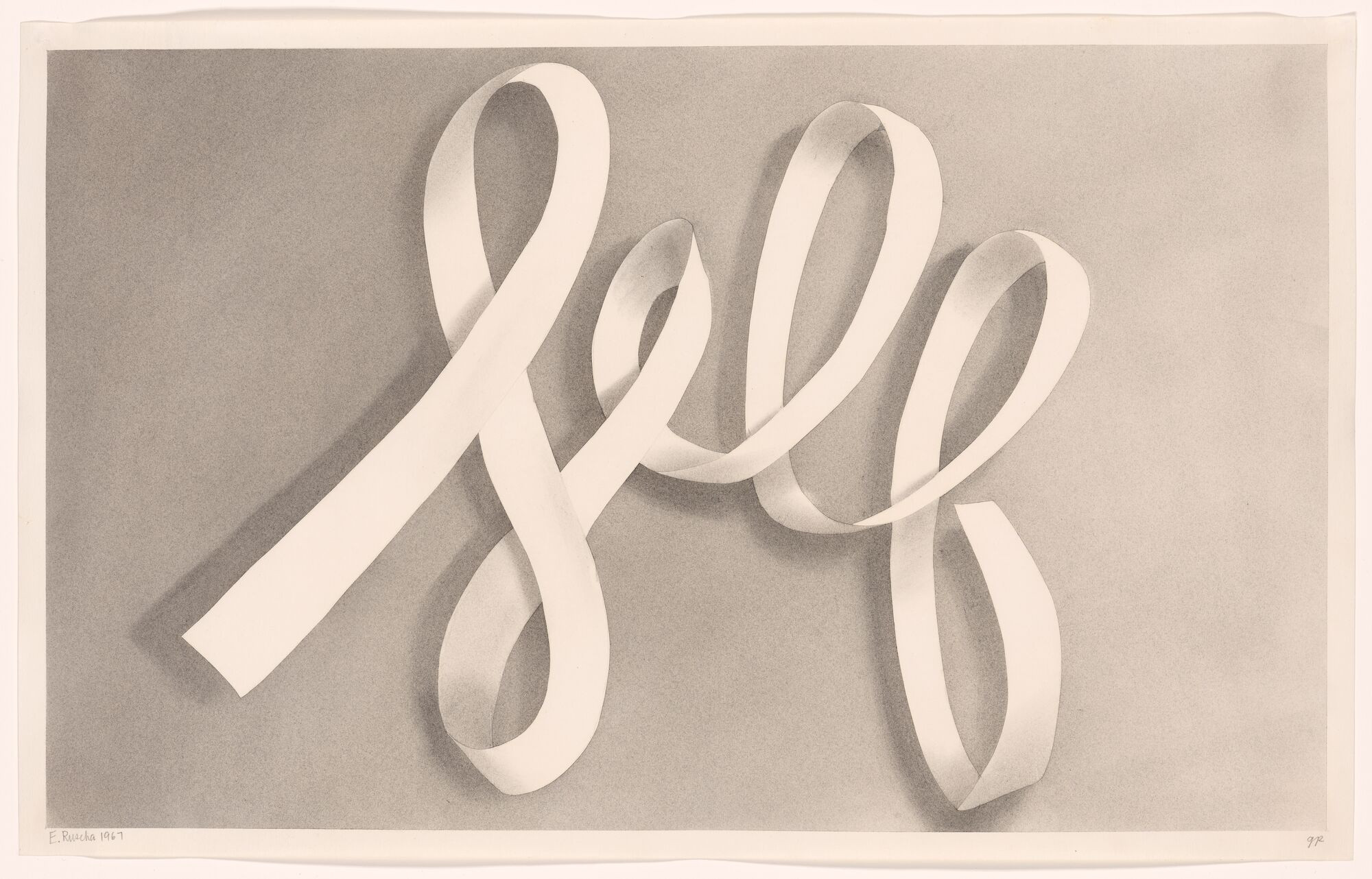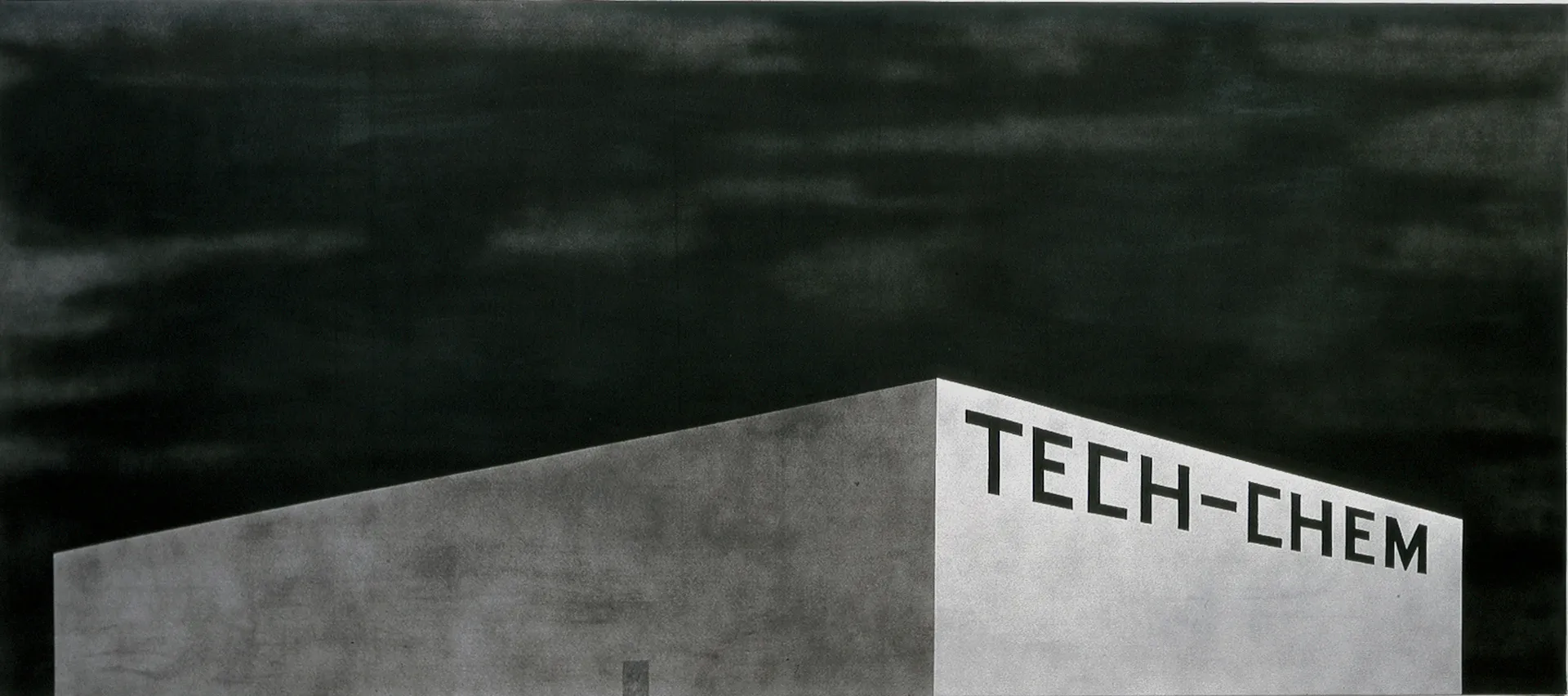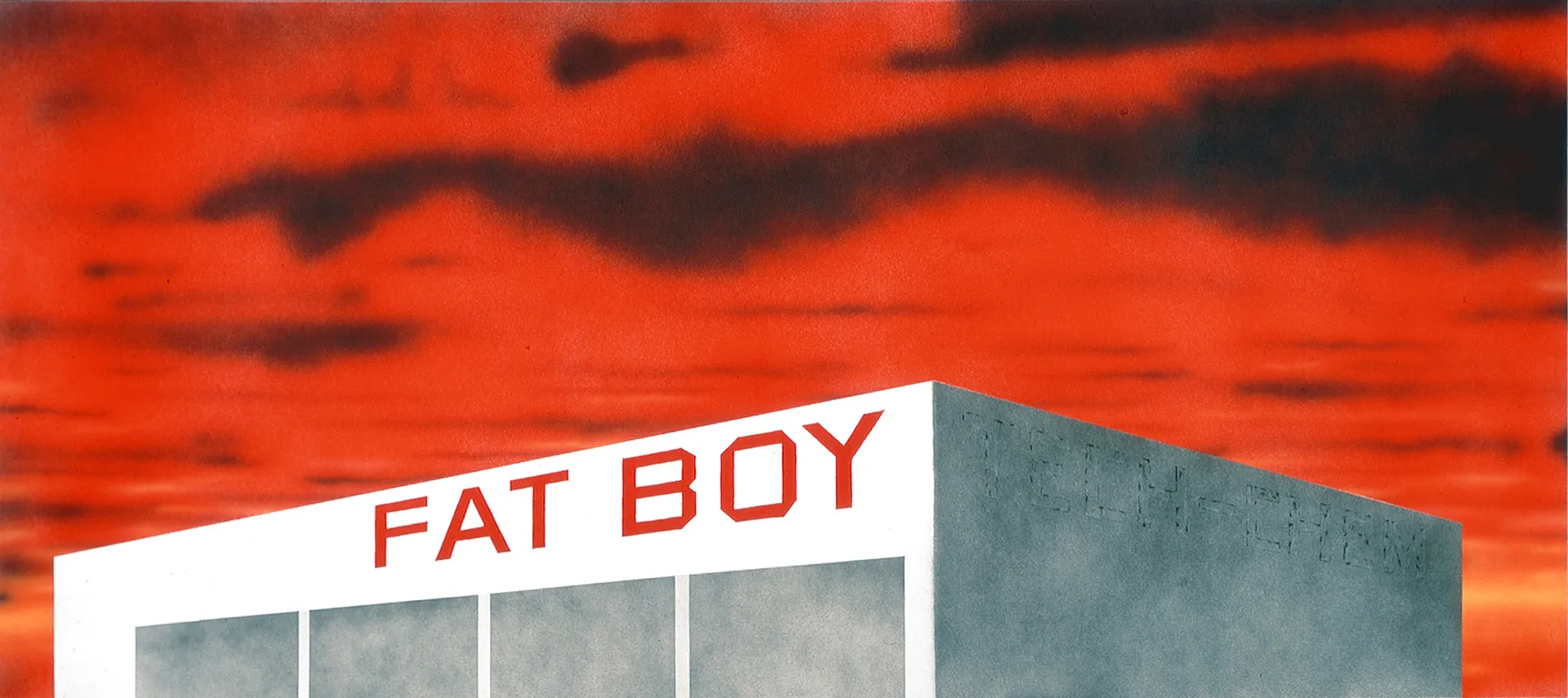For this independent visit, I chose to go to the Museum of Modern Art (MoMA), and one exhibit that caught my attention was ED RUSCHA / NOW THEN. If anyone is interested in visiting, it’s available until January 13, 2024.
Ed Ruscha was an American artist, who produced work primarily from the mid-1900s to the late-1900s. A lot of his inspiration came from his journey from Oklahoma City to Los Angeles along Route 66 in 1956, while some just came from his thoughts. With over 200 pieces, this exhibit highlights Ruscha’s great level of intricacy in his life work and is the embodiment of the pop art movement. It includes popular post-war pieces with the obvious, title-recognized theme of past vs. present, as well as pieces simply reminiscent of the culture at the time.
Self

In 1967, Ruscha created Self, a pastel and gunpowder on paper artwork. Upon further research, Ruscha had gunpowder pellets in his studio that he soaked and evaporated to turn into a powdered drawing material. He used the pastel and gunpowder combination to create a smoky shading behind the cursive, ribbon-like “Self.” This gives the illusion that “Self” is another element on top of the paper and brings the word to life by giving it shape and body. It encourages introspection and questioning of your role in society, which definitely occurred in the 1960s, specifically in students with the rise of student protest movements. Reflecting on the use of gunpowder, I think it’s interesting that Ruscha chose to use this unique edition when he probably could’ve substituted it for another medium. However, I think it speaks to his attention to detail and care put into his artwork. Overall, it’s very intriguing to explore an artist’s stylistic choices and how they contributed to the piece as a whole.
Blue Collar Tech-Chem and The Old Tech-Chem Building


In 1992, Ruscha created the Blue Collar Tech-Chem, an oil on canvas artwork. Everything is painted in black or shades of gray, and the only things visible in this painting are two, plain walls of a building with “TECH-CHEM” printed on the side and the dark-colored sky in the background. This is painted from the perspective as if you’re driving down the highway looking at this from the window. From the title, we can decipher that this building is labor or industrialization-related, and the dark-colored sky could be a result of industrial emissions. The lack of activity and color gives the piece a very ominous, depressing feel and a sense of isolation. In 2003, Ruscha created its counterpart, The Old Tech-Chem Building. In this artwork, the isolated perspective remains, but the dark sky has been primarily replaced by bold red hues. There are added gaps in the plain wall, depicted by these gray rectangular shapes. Although it’s unclear if these are windows or a different architectural feature, it seems the once industrial building has turned into a different, corporate-style building. Most notably, you can see remnants of the “TECH-CHEM” logo, which has been replaced by a red “FAT BOY” logo on the front of the building. “FAT BOY” references the bombs dropped over Japan during World War 2, which were known as “Fat Man and Little Boy,” with the red sky showing the effects of the explosions, signifying danger and violence. I interpreted this as the evolution of American society, but our evolution is only built upon its cruel history, which can’t be erased. I also found myself thinking that while we may think that we’re constantly advancing our architecture, technology, etc. in reality, are we just creating more problems atop past ones?
When you enter the ED RUSCHA / NOW THEN exhibit, you’re surrounded by simpler, more typical pop art pieces, such as Self, which contain logos or single words. As you progress through, unusual pieces, such as Blue Collar Tech-Chem and The Old Tech-Chem Building, which contain landscapes, everyday objects, and seemingly confusing sayings are incorporated as well. The exhibit organization gives insight into an artist’s thought process–art begins as an opportunity to showcase personal eccentricity but as you mature, you find freedom in art as a way to express your political and cultural opinions. As I moved throughout the exhibit, I shifted from briefly stopping to observe and admire, to standing in front of pieces in a state of confusion and somewhat frustration from trying to make sense of them. I realized that although this exhibit is partially called NOW THEN, these are all significant, timeless artworks. These logos are still recognizable today, these words are embedded into the English language, and themes of self-reflection, historical darkness, etc. can be applied to any person or time period. Art can transform anything into a creative masterpiece for all generations.

I love the MoMA and I’m glad you enjoyed it too! It’s definitely one of those museums that makes you really wonder what the artist’s intention was in making their piece as many of them aren’t very straightforward. I also really enjoyed reading your interpretation of Ruscha’s “Blue Collar Tech-Chem” and “Old Tech-Chem Building” and how they interplay together to convey an important issue of the costs of progress.
I loved your analysis of the “Self” piece and what it stands for. I was especially intrigued by the use of gunpowder and it’s connection to the protests, the unconventional use of the power as an art medium is a reminder of it’s conventional uses.